Air India Flight 171 (Ahmedabad to London): Timeline, Response, and Safety Lessons
15 Jul 2025
5 mins Read
15 Jul 2025
5 mins Read
On June 12, 2025, Air India Flight 171 – a Boeing 787-8 Dreamliner – departed Ahmedabad’s Sardar Vallabhbhai Patel International Airport at 13:38 IST (08:08 GMT) bound for London Gatwick . The takeoff initially appeared normal under clear weather conditions (light winds ~6 knots, 6 km visibility, and no significant clouds) . However, within 30–40 seconds of liftoff, the aircraft abruptly lost thrust in both engines, causing an immediate loss of altitude.
Witness accounts and airport CCTV suggest that the jet barely climbed a few hundred feet before it began descending. One of the pilots urgently radioed a “Mayday, Mayday, Mayday” distress call, reporting loss of power shortly after takeoff . At approximately 13:39 IST – barely half a minute after becoming airborne – Flight 171 crashed into a hostel building on the campus of Ahmedabad’s B.J. Medical College, which is about 1.5 km from the runway . The impact and ruptured fuel tanks triggered multiple explosions and a large fire, engulfing parts of five buildings in the densely populated area.
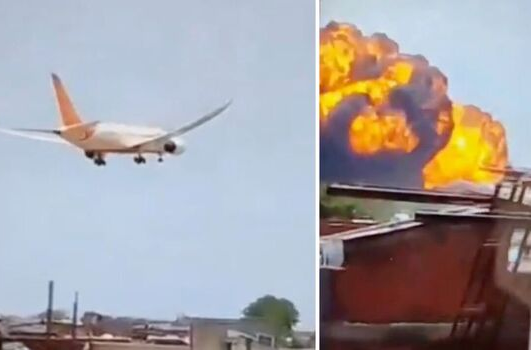
Tragically, the crash resulted in catastrophic loss of life. Out of 242 people on board (230 passengers and 12 crew), 241 were killed,, with only a single passenger surviving the accident . The sole survivor – a 40-year-old British national seated near an exit – managed to escape the wreckage with minor injuries, an almost miraculous outcome amid an otherwise total loss of life . On the ground, the debris and fire claimed the lives of 19 people (residents and medical students in the hostel) and injured 67 others in the vicinity . This makes the Flight 171 disaster the world’s deadliest aviation accident in a decade, highlighting the severity of the incident .
The aircraft involved was a Boeing 787-8 Dreamliner, tail number VT-ANB, which had been in service with Air India since 2014 . The Dreamliner is a modern wide-body airliner introduced in 2011, known for its advanced technology, fuel efficiency, and extensive use of composite materials. Notably, the crash of Flight 171 marks the first-ever fatal accident and hull loss for the Boeing 787 family since its entry into commercial service .
This particular 787-8 was about 11 years old and powered by two General Electric GEnx-1B engines . Air India’s Dreamliner fleet typically serves long international routes, and the Ahmedabad–London flight was a regularly scheduled service (AI171) that the airline had been operating as part of its expansion to London Gatwick since 2023 . The 787’s cockpit is equipped with advanced avionics and safety systems, including engine fuel control switches that manage fuel supply to the engines – a critical detail in this incident. The crew on Flight 171 were experienced: the 56-year-old Captain (15,600 flight hours, including over 8,000 on the 787) and a 32-year-old First Officer (3,400 hours total) were both well versed in operating the Dreamliner .
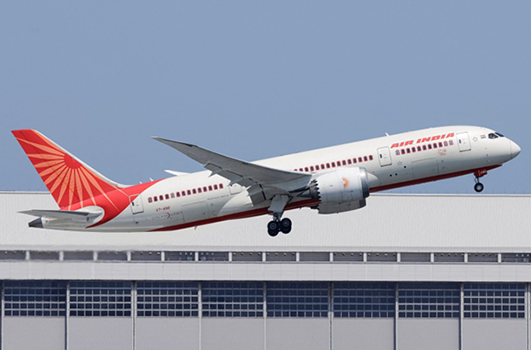
In the immediate aftermath, a massive emergency response was launched. Airport fire crews and city firefighters were on site within minutes; over 300 firefighters and 60 fire vehicles from Ahmedabad and neighboring districts fought the blaze and searched for survivors . Ambulances and disaster response teams converged on the crash site, and authorities sealed off surrounding roads to facilitate rescue operations . All flights at Ahmedabad Airport were temporarily suspended right after the crash, resuming later in a limited capacity once the situation was under control . The Indian Army, National Disaster Response Force, and local civil defense also assisted in rescue and relief efforts, while municipal teams worked to clear debris and secure the area .

Indian authorities quickly initiated an investigation. The Aircraft Accident Investigation Bureau (AAIB) of India leads the probe, with technical support from Boeing and aviation safety teams from the US and UK . Within a day, officials recovered the flight data recorder and cockpit voice recorder (“black boxes”) from the wreckage to analyze the flight’s final seconds . By June 13, India’s aviation regulator (DGCA) directed immediate safety checks on Air India’s entire 787 fleet, ordering enhanced pre-flight inspections and system tests (fuel system checks, engine controls, etc.) to ensure no underlying issues were present in other aircraft . This swift action reflects a precautionary approach to prevent any potential systemic problem from affecting other flights. Air India, now owned by the Tata Group, stated it is fully cooperating with investigators and also launched its own internal inquiry . The airline’s CEO urged caution against speculation, emphasizing that the investigation was far from over and that no definitive cause had yet been identified . Top government officials, including India’s civil aviation minister, likewise appealed for patience, noting that it was too early to draw conclusions and that the focus was on a thorough fact-finding process .
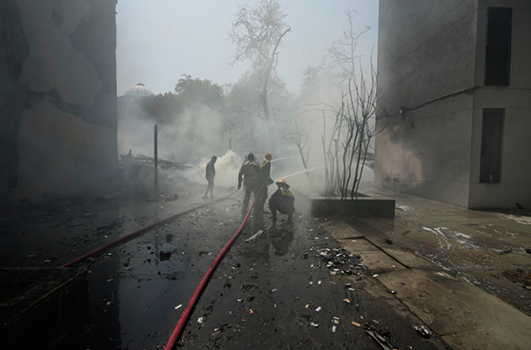
Early evidence from the preliminary investigation has shed light on a perplexing technical sequence that led to the dual engine failure. Flight data and cockpit voice recordings indicate that seconds after takeoff, both engines shut down almost simultaneously because their fuel control switches were somehow moved from the “RUN” position to “CUTOFF,” cutting off fuel supply . This anomalous switch movement – happening one right after the other – starved the engines and caused the sudden loss of thrust . In the cockpit, this led to confusion: one pilot urgently asked the other “Why did you cut off (the fuel)?”, to which the second pilot responded “I did not do so.” . Investigators have not yet determined how or why the switches flipped; experts note these guarded switches typically cannot be accidentally bumped or easily turned off in flight . The situation was dire – essentially a double engine flame-out at low altitude, one of the most challenging emergencies imaginable.
The crew of AI171 reacted immediately to try to save the aircraft. They re-opened the fuel switches to “RUN” and emergency systems kicked in: a Ram Air Turbine (RAT) deployed to provide backup power, and the auxiliary power unit (APU) automatically started up to try to restart the engines . These measures did lead to a partial relight of the left engine; however, the right engine failed to recover thrust in the few seconds available . Unfortunately, at an altitude of only a few hundred feet, there was not enough time or height to regain lift, and the aircraft remained in a shallow, wings-level descent until impact . Notably, weather was not a contributing factor – conditions were fair and did not impede the aircraft’s performance or the pilots’ visibility . This points to the cause being a mechanical malfunction, human factor, or some interaction between systems, rather than any external weather event.

One important piece of context is a 2018 FAA advisory that investigators unearthed, concerning the fuel control switches on Boeing aircraft . The advisory warned of a potential flaw in the switch locking mechanism, after some Boeing 737 operators reported switches found with the lock feature disengaged . While the 787 Dreamliner is a different model, the Air India preliminary report noted this advisory because a similar design philosophy might apply. Air India confirmed that it had not specifically inspected its 787 fuel switch locks in response to the FAA bulletin (since it was non-mandatory) . So far, no direct evidence links this potential lock issue to the Flight 171 crash, but it remains a focus of the technical inquiry. The aircraft’s maintenance records showed it was airworthy and up-to-date on inspections, with no known defects in the fuel control system reported prior to the accident . Thus, the mystery remains unresolved pending further analysis: whether a hardware fault, software glitch, or an as-yet unknown human or systemic error caused the fuel knobs to slip to “CUTOFF” is still under investigation .
For student pilots and aviation safety enthusiasts, the Flight 171 incident offers several critical lessons and talking points. First and foremost, it underscores the importance of preparedness for emergencies during critical flight phases. Takeoff and initial climb are moments of high workload and risk; this accident – a dual engine failure immediately after takeoff – is an extreme scenario that crews hardly ever encounter in real operations. Yet, it’s a scenario that flight simulators and training syllabi can address. Pilots practice engine-out procedures (one-engine inoperative scenarios) regularly, but a simultaneous failure of both engines at low altitude is exceptionally rare. The crew’s swift actions (declaring Mayday, attempting engine restart, deploying backup systems) exemplify the value of rigorous training and adherence to emergency checklists under pressure . Even with exemplary crew response, the outcome demonstrates that some situations can overwhelm the safety margins – a sober reminder of why strict akeoff safety speeds and climb profiles exist to protect against engine-out scenarios, and why maintaining proficiency in emergency drills is vital.
Secondly, the incident highlights the role of aircraft systems knowledge. Modern airliners like the 787 have complex automation and protections, but pilots must be intimately familiar with critical controls – such as fuel cutoff switches – and their design. The fact that guarded fuel switches moved to cutoff unexpectedly raises awareness about the mechanical design and ergonomics in the cockpit. Trainees can learn from this to always double-check that safety locks and guards on critical switches are in place and to be mindful of any possible design quirks. Furthermore, once the investigation is complete, any recommendations (for example, improved switch guards or additional inspections) will likely be incorporated into training curricula and maintenance practices. In this case, regulators worldwide have already taken notice; for instance, authorities initiated special inspections of 787 fuel systems after the crash to ensure there’s no hidden flaw . This proactive approach is a lesson in itself: safety is a moving target, and industry-wide learning from one airline’s accident is key to preventing recurrence.
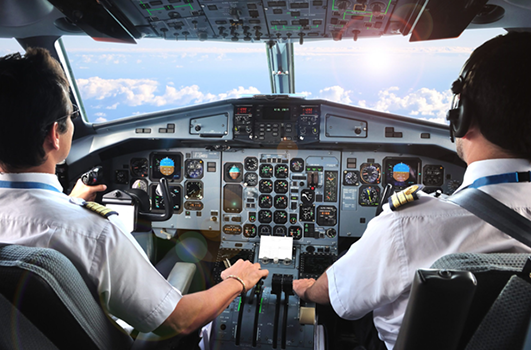
Lastly, the Flight 171 crash teaches the importance of a just culture and avoiding premature blame. In the immediate aftermath, there was media speculation about pilot error or even deliberate action, given the unusual engine shutdown sequence . However, pilot associations and Air India’s leadership strongly cautioned against such conjecture, emphasizing that the preliminary report assigned no blame and that the cause remained unknown . For aspiring aviators, this is an important insight: accident investigations are meticulous processes, and professionals wait for evidence before drawing conclusions. This culture of methodical analysis and fairness helps ensure that the true root causes are found and addressed, rather than rushing to judgement. It upholds trust in the investigative process and ultimately leads to more effective safety improvements.
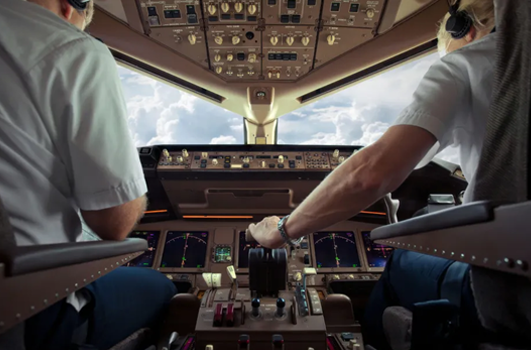
In sum, the Air India Flight 171 incident was a tragic and extraordinary event – the first fatal crash of a Dreamliner and a stark reminder that even the most advanced aircraft are not immune to failures. The timeline of events on that June day, the technical mystery of the fuel switch cutoff, and the subsequent response by crews and authorities offer a wealth of learning material. For student pilots and aviation safety learners, this accident reinforces why continuous training, deep technical understanding, and a steadfast commitment to safety protocols are indispensable in the pursuit of safer skies .
